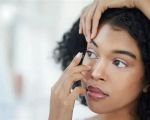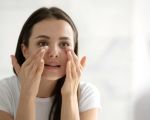
- 1-Understanding-Eye-Strain-in-Office-Environments
- 2-Impact-of-Poor-Lighting-and-Ergonomics-on-Eye-Health
- 3-Practical-Tips-to-Prevent-Eye-Strain-at-Work
- 4-Real-Life-Examples-of-Eye-Strain-and-Recovery
- 5-Explore-Eye-Care-Products-and-Services-at-Eye-Docs
1. Understanding Eye Strain in Office Environments
Eye strain is a common complaint among office workers, especially in environments where lighting is inadequate and ergonomic practices are lacking. Symptoms include dry eyes, headaches, blurred vision, and fatigue. These issues arise when the eyes struggle to focus or adjust to poor visual conditions over prolonged periods.
Recognizing eye strain early is essential to prevent long-term damage and maintain productivity.
2. Impact of Poor Lighting and Ergonomics on Eye Health
Poor lighting—such as glare, flickering lights, or insufficient illumination—forces the eyes to work harder, leading to fatigue. Similarly, improper ergonomics, including incorrect monitor height and viewing distance, can cause awkward head and eye positions, intensifying discomfort.
These factors combined create a challenging visual environment that heightens the risk of eye strain.
3. Practical Tips to Prevent Eye Strain at Work
To protect your eyes in office environments with poor lighting and ergonomics, consider these strategies:
- Optimize Lighting: Use adjustable desk lamps with soft, natural light to reduce glare and shadows.
- Adjust Your Workspace: Position your monitor about an arm’s length away and slightly below eye level.
- Follow the 20-20-20 Rule: Every 20 minutes, look at something 20 feet away for 20 seconds to relax eye muscles.
- Maintain Good Posture: Sit upright with proper chair support to reduce strain on neck and eyes.
- Use Anti-Glare Screens or Glasses: These reduce reflection and help your eyes focus comfortably.
4. Real-Life Examples of Eye Strain and Recovery
John, a graphic designer, experienced chronic headaches and blurred vision due to a poorly lit workspace. After implementing ergonomic changes and improving his lighting setup following advice from Eye Docs, he noticed a significant reduction in symptoms and enhanced concentration.
Another example is Lisa, who began using blue light filtering glasses and scheduled regular breaks during work hours. These adjustments alleviated her eye dryness and discomfort, allowing her to work longer without fatigue.
5. Explore Eye Care Products and Services at Eye Docs
Eye Docs provides a range of eye care solutions tailored for office workers facing challenges from poor lighting and ergonomics. From professional consultations to specialized glasses and ergonomic tools, their offerings help protect your vision and improve workplace comfort.
Utilizing Eye Docs’ expertise and products ensures you adopt effective measures to prevent eye strain and maintain healthy eyes in demanding office environments.








